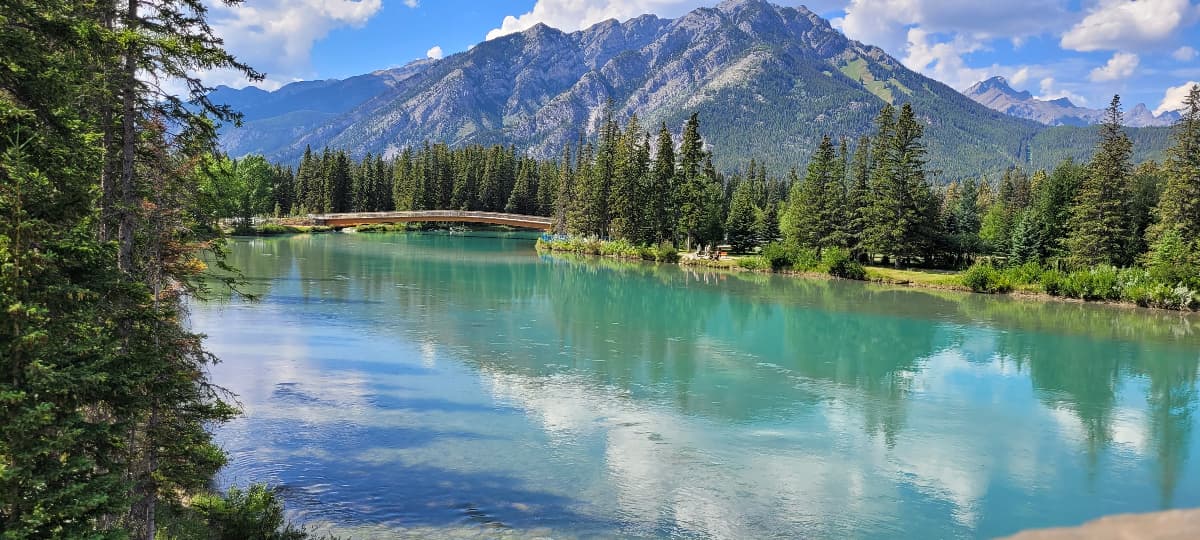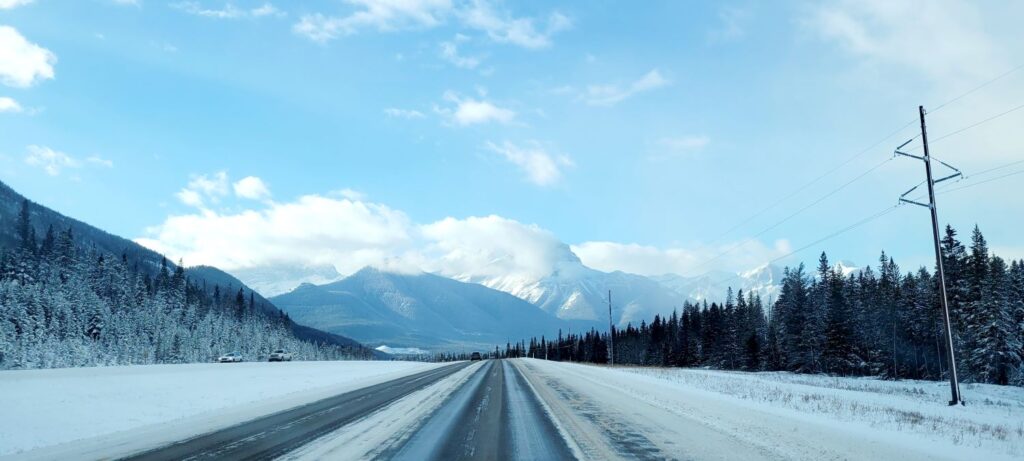Did you know that Banff National Park is known as the birthplace of the Canadian Rockies?
Established as Canada’s first national park in 1885, this stunning location has welcomed millions of visitors over the years since then. And it’s no coincidence—its spectacular scenery has made it a top travel destination since its founding.
But Banff’s history goes far beyond the land’s natural beauty; it also has a rich and fascinating past, which we thought was important to include.
So below is a brief history of Banff National Park, from its beginning to the present, and how it became the beloved national treasure it is today.
Canada’s most famous Rocky Mountain wilderness
William Van Horne was hired to supervise the construction of the transcontinental railway through the Canadian Rockies. The Canadian Pacific Railway (CPR) was then founded in 1881 to connect Canada’s east and west coasts.
Along the route, the first train stop called “Siding 29” was founded close to where the CRP railway tunnel was supposed to be, which was 3 km from today’s Banff Townsite. No tunnel was ever built.
The transcontinental railway was finally completed in the Bow Valley, and it was decided the townsite would be renamed Banff on November 25, 1883.
Why Banff? Well, it was named Banff after Banffshire in Scotland, which was the birthplace of George Stephen, CRP’s first president, and Donald Smith, who was vice president.
When the Banff Springs Hotel was completed in 1888, it became obvious that the train station was too far away from the touristy areas, so they closed it down and moved it to its current location at Railway Avenue.
Since then, Banff has had a rich history of tourism.

Discovery of natural hot springs
Three Canadian Pacific Railway construction workers turned prospectors (Frank McCabe and brothers William and Thomas McCardell) discovered natural hot springs at the foot of Sulphur Mountain.
It was here that they set up a cabin nearby to claim ownership of the springs.
However, these three weren’t the only ones trying to lay claim to the area, so to avoid further conflict of ownership, and on the recommendation of CP Rail, an Order in Council gave the federal government ownership to preserve the hot springs and the surrounding 10 square miles.
Canada’s first national park (and the third worldwide), called the Rocky Mountains Park, was then created on November 28th, 1885.
Banff’s history was shaped by the park’s expansion, which included Lake Louise in 1887.
It wasn’t until 1930 that the Rocky Mountains Park of Canada was renamed Banff National Park.
As well as being the capital of the Canadian Rockies, Banff was also responsible for the birth of Canadian tourism and the discovery of the hot springs that were mentioned above, now a national historic site known as Cave and Basin, which were at the heart of it.
Banff town is born – the new iconic Canadian destination
The town became the focus of development with tourism in mind, and in 1886, George A. Stewart was given the job of designing the townsite.
He started by allocating large areas of land on the south side of the river to build luxurious hotels that would attract wealthy Victorians.
By the end of December 1887, there were six hotels, nine stores, two churches, a school, and a post office.
During this year, the natural hot springs brought an estimated 3,000 visitors to Banff, which would increase to 8,156 in 1901.[1]
1888 saw the opening of the five-story Banff Springs Hotel, which had a bathhouse with two plunge baths and ten tubs on site. All the water was sourced from the Upper Hot Springs.

Trans-Canada Highway brings the tourists
Up until 1910, cars were not allowed in the park, but with the rise in car ownership came the need to build a highway, and by 1911, visitors from Calgary could travel by car to the park, and then to Lake Louise by 1920.
Construction of the Banff-Jasper highway began in 1932 and was opened in 1940, giving a direct route from Lake Louise to Jasper.
The Trans-Canada Highway that goes through Banff National Park was finally completed in 1958, bringing an influx of tourists with it.
Investment in the townsite rapidly grew, and tourists have flocked to this small town and its national park in the Canadian Rockies ever since.
Banff National Park declared UNESCO World Heritage Site
In 1984, the park became a UNESCO World Heritage Site (along with Jasper, Kootenay, and Yoho national parks, and Mount Robson, Mount Assiniboine, and Hamber provincial parks), which solidified Banff’s position as Canada’s top national park.
The town also became an independent municipality in 1990.
The seven parks of the Canadian Rockies form a striking mountain landscape. With rugged mountain peaks, ice fields, and glaciers; alpine meadows; lakes; waterfalls; extensive karst cave systems; thermal springs; and deeply incised canyons, the Canadian Rocky Mountain Parks possess exceptional natural beauty.
whc.unesco.org
Banff’s Indigenous history
The history of the indigenous peoples in Banff National Park is closely tied to that of the park itself.
Of course, long before the Canadian Railway construction workers arrived, the hot springs and the area that is now the park was of cultural significance and home to several groups of indigenous people, such as the Stoney Nakoda, Tsuut’ina, Piikani, Ktunaxa, Kainaiwa, Siksika, and Plains Cree.
When European explorers arrived, they traded with the new arrivals and helped them navigate the terrain.
However, the indigenous communities were forced off their land, and by the end of the 19th century, they were no longer permitted to hunt there.
This resulted in many deaths from diseases and starvation. They were relocated to reservations, where their culture and traditions were gradually being lost.
Today, the descendants of those original inhabitants still live in the region, and despite many challenges, they remain an important part of Banff’s history and culture.
Banff National Park today
Learning about the history of Banff makes it all the more interesting and will give you a deeper appreciation of the park when you visit, but what is the park like today?
Banff has come a long way since its humble beginnings as Siding 29 to become one of the world’s most popular tourist destinations
And with that comes many challenges in trying to find a balance between protecting its natural and cultural resources, providing a high-quality visitor experience, and addressing the impacts of over-tourism.
According to Parks Canada, Banff has seen a 30% increase in visitors over the last decade, resulting in over 4 million visitors annually.
This increase certainly puts a strain on resources and infrastructure, leading to overcrowding and traffic congestion.
Additionally, there are also concerns about sustainability and its impact on the park’s ecological and heritage values.
Although there is no magic wand or definitive way to resolve the park’s challenges, Parks Canada outlines plans and policies that aim to address them and find the right balance between preserving the environment and taking a sustainable approach to tourism.
As the park continues to grow and evolve, thankfully, many agencies are working to find sustainable solutions that will ensure the long-term health and vitality of this remarkable place.


